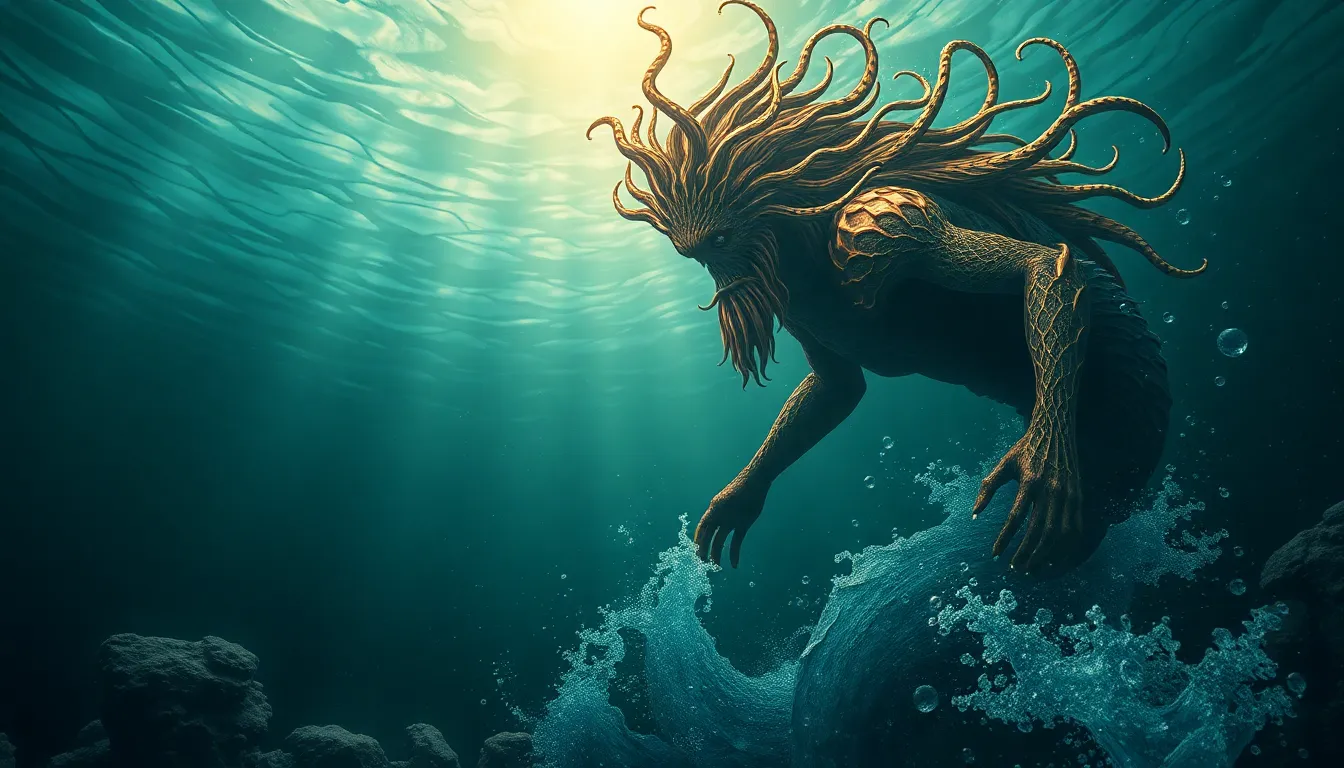The Shapeshifting Waters: Exploring the Myths of Water Nymphs
I. Introduction
Water nymphs, often depicted as ethereal beings residing in rivers, lakes, and oceans, hold a significant place in mythology across various cultures. These enchanting spirits are not merely figments of imagination; they symbolize the profound connection between humanity and nature. This article delves into the rich tapestry of water nymph myths, exploring their origins, characteristics, and cultural significance.
II. Origins of Water Nymph Myths
The concept of water nymphs has historical roots dating back to ancient civilizations. Cultures such as the Greeks and Romans revered these spirits, attributing to them the guardianship of water bodies.
- Historical roots in ancient civilizations: The earliest references to nymphs can be traced back to Greek mythology, where they were seen as divine spirits associated with various natural elements.
- Connection to nature and the environment: Water nymphs often embody the essence of the water they inhabit, reflecting the beauty and danger of nature.
- Evolution of water nymph stories over time: As societies evolved, so did the narratives surrounding these mythical beings, adapting to cultural changes and environmental concerns.
III. Types of Water Nymphs
Water nymphs are not a monolithic group; they vary significantly based on their habitat and cultural context. Here are some notable types:
- Naiads: These are freshwater nymphs found in rivers, lakes, and springs. They are often depicted as youthful maidens, embodying the life-giving properties of fresh water.
- Oceanids: In contrast, oceanids are sea nymphs associated with the vastness of the ocean. They are often portrayed as more mysterious and powerful.
- Other regional variations:
- Rusalki: Slavic water spirits that are often depicted as beautiful young women who can lure men to their watery graves.
- Melusine: A European folklore figure, often depicted as a woman with the tail of a fish or serpent, symbolizing the duality of water’s allure and peril.
IV. Characteristics and Powers of Water Nymphs
Water nymphs are characterized by their enchanting beauty and mysterious powers. Their traits can be categorized as follows:
- Physical descriptions and shapeshifting abilities: Often described as stunningly beautiful, many water nymphs possess the ability to change their form, reflecting their connection to the fluidity of water.
- Connection to water bodies: Each type of nymph is closely tied to specific water bodies, which influence their personalities and stories. Naiads are gentle and nurturing, while oceanids may embody the tempestuous nature of the sea.
- Roles in mythology: Water nymphs serve multiple roles, including protectors of their domains, seducers of mortals, and sometimes tricksters who use their charm for mischief.
V. Cultural Representations of Water Nymphs
The depiction of water nymphs varies widely across different cultures:
- Water nymphs in ancient Greek and Roman mythology: In classical mythology, nymphs were often associated with the gods and were integral to various myths, such as those involving Apollo and Dionysus.
- Depictions in Slavic folklore: Slavic tales often portray rusalki as tragic figures, reflecting themes of love, loss, and vengeance, adding a darker dimension to the idea of water spirits.
- Influence in literature and art: From the romantic paintings of the 19th century to contemporary literature, water nymphs continue to inspire artists and writers, symbolizing beauty, mystery, and the allure of nature.
VI. Symbolism of Water Nymphs
Water nymphs are rich in symbolism, embodying various themes that resonate with human experience:
- Water as a symbol of life and transformation: Water is essential for life, and nymphs often represent the nurturing aspects of this element, as well as its capacity for change.
- The duality of attraction and danger: While water nymphs can be alluring and beautiful, they also embody the dangers of water, reminding us of nature’s unpredictable power.
- The role of water nymphs in representing femininity and nature: Often depicted as female, nymphs symbolize feminine qualities associated with nature, nurturing, and the cycles of life.
VII. Modern Interpretations and Adaptations
In contemporary society, the fascination with water nymphs persists, evolving to reflect current themes:
- Water nymphs in modern literature and film: They appear in various forms, from fantasy novels to movies, often reimagined as complex characters with agency.
- The revival of interest in mythological themes: Modern storytelling increasingly draws on mythological themes, adapting ancient narratives to explore contemporary issues.
- Environmental and feminist readings: Today’s interpretations often highlight environmental concerns and feminist perspectives, examining the relationship between women and nature.
VIII. Conclusion
The enduring legacy of water nymphs reflects humanity’s deep connection to water and nature. As symbols of beauty, danger, and transformation, they continue to resonate in our collective consciousness. In an era marked by environmental challenges and a quest for deeper connections with nature, water nymphs invite us to explore the rich mythology surrounding them and the lessons they impart. Their stories are not just relics of the past but relevant narratives that inspire us to reflect on our relationship with the world around us.



